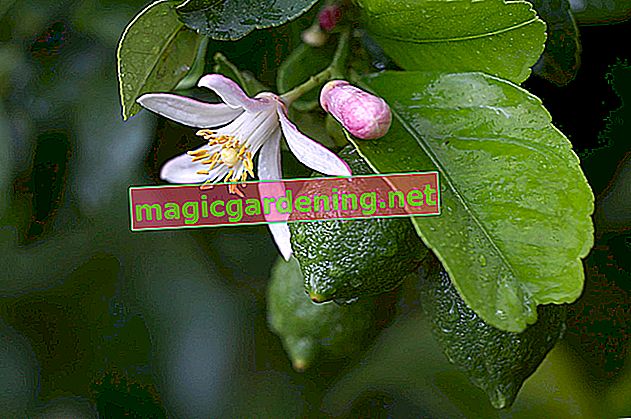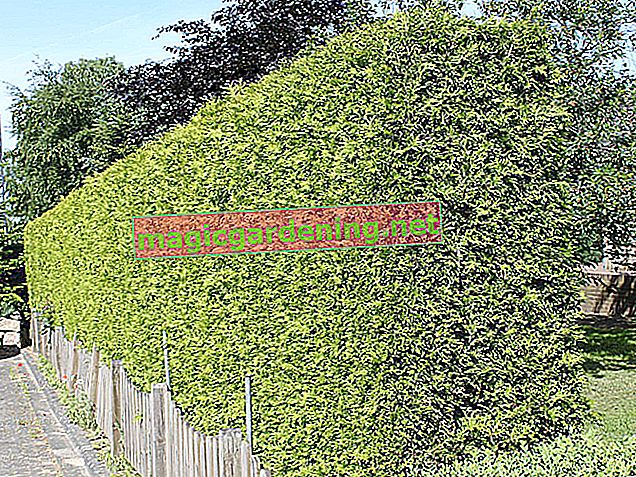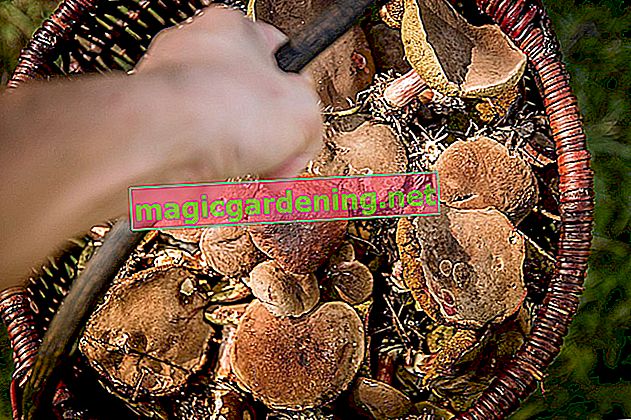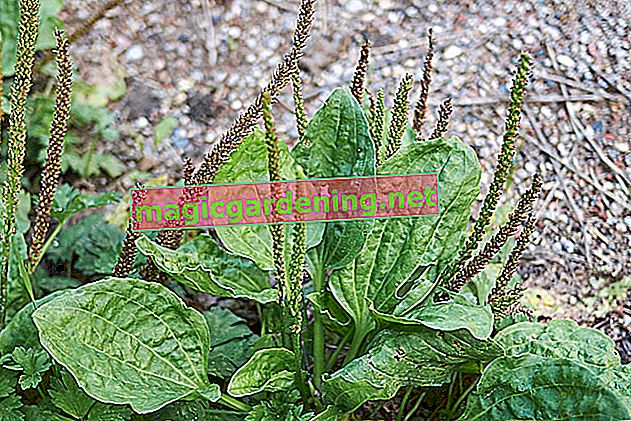
Wrong location causes concerns about flowers
If the clematis refuses to flower, it does not feel comfortable in the location. You should therefore check whether the following light, temperature and soil conditions are present:
- Sunny to partially shaded location
- Warm with temperatures of 15 to 22 degrees Celsius
- Protected from rain and strong winds
- Well drained, humus rich soil, rich in nutrients
- Fresh and without the risk of waterlogging
also read
- Pruning Clematis Or Not - Tips For Pruning
- Cut off withered clematis flowers or not?
- How high does the clematis grow? - Clematis growth overview
The clematis attaches particular importance to a sunny head and a shaded foot. If the root area is regularly exposed to direct sunlight, the clematis will not bloom. A shade-giving underplanting of weak-growing ornamental plants such as blue pillows or purple bells solves the problem, as does a mulch layer of pine soil, pebbles or bark mulch.
The clematis does not bloom when hungry or thirsty
A balanced supply of water and nutrients creates the fundamental basis for the magnificent clematis bloom. If the climbing plant is out of balance in this regard, no flowers can be seen. So pay special attention to these aspects of care:
- Water clematis regularly without causing waterlogging
- In March / April and June / July fertilize with special fertilizers
- Alternatively, from March to September every 8-14 days supply with compost, horn shavings (€ 6.39 at Amazon *) or guano fertilizer
- Alternately fertilize with potassium-rich comfrey manure
Cutting at the wrong time robs clematis of their bloom
Spring-blooming clematis already plant the buds in the previous year. Anyone who picks up scissors in late winter robs the clematis of any chance of a lush flow of flowers. Popular species such as Clematis alpina and Clematis montana are therefore pruned after flowering. Summer and late-blooming specimens cut into shape in November / December.
Tips & Tricks
Although the clematis by nature can withstand frosty temperatures, if the ground frosts too late, there is a risk that the flower will fail completely. So that the buds of early-blooming Clematis species do not freeze to death, experienced hobby gardeners keep an eye on the weather forecast until mid / late May. If the ice saints strike with minus degrees, protect the clematis at night with a garden fleece or jute sack. (€ 6.86 at Amazon *)








